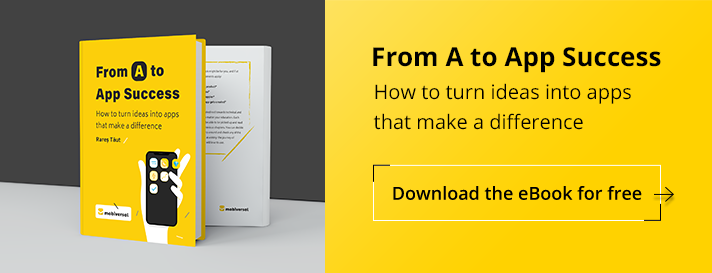How to Grow Your App. An Overlooked Perspective

People who want to build apps are generally enamored with the feature set they thought of.
And that’s generally a good thing to be excited about, especially if they’ve done their research and their ideas are one of a kind.
But the thing is, users (i.e. your future customers) don’t want features. Well, not explicitly.
They want experiences that better their lives.
And we believe that the best way to create experiences that better the lives of people is not to set up a feature factory, but to include marketing processes as early in the development process of an app as possible.
From what we observed, this is one of the most important factors of the success of the app, post-launch.
The best way to make sure that you grow your app the best you can is to start from the beginning (from the ideation phase) thinking about how you will market the application.
Because from what we observed, even though you may wear rose colored glasses and be biased about how cool your feature set is, chances are that it’s not enough to ensure your app grows at the rate it could.
It’s an aspect that for those of us who are engineers, programmers, and more logical-oriented needs some effort to comprehend.
Not because it’s a hard concept to digest, but because it goes against the grain of our expectations.
We think that if we cram in this amazing feature set, then the app will organically harmonize and people will automatically be as enamored with it as we are.
And then the app will grow exponentially.
People think that “If I just nail the perfect feature combination, then I will reap success”, in a Professor Utonium mindset from PowerPuff girls.
Adding juuuust the right features
Then, people get shocked when their app flops.

But I put all these awesome features in it…
Yes, yes you did. And the features are awesome, taken individually. Maybe even taken together.
But, who asked for them?
The thing is, people set their thought process in a counter-intuitive, albeit fairly logical way.
It’s not that you first build the app, THEN you think about how to market it.
You think about how to market your app WHILE you build it.
This is the crux of the issue, and something that didn’t come naturally even to us.
The most important thing that ensures your app grows fast is to incorporate marketing “features” and thinking while creating the concept of your app.
You can even iterate on an existing app by adding or re-assessing existing features to make them marketing oriented.
Let’s give you an example of how we apply this principle. We also wrote about it in our Marketing chapter in our book, which is the largest one in the whole book (another proof of how important marketing is in growing your app and achieving success.)
Everybody knows how important reviews are for an app.
Probably you also guide yourself by how many positive reviews an app has.
Well, we want to show you an example of how we applied this principle in our own product Appointfix.
Reviews are a key asset that launches you at the top of both app stores and people’s trust.
So they inadvertently become a great marketing tool.
Already having built a considerable user base of happy customers with Appointfix, we decided to implement a small feature that would boost our reviews.
Because the happiness of the customers could be converted into an outcome that would mean little effort for them (as in leaving positive review) but the world to us.

One teensy-weensy little heart that goes a long way
That’s why we decided to add a small heart on the agenda, which would catch the attention of the user.
From there, the users are politely asked if they could leave us a small review if they enjoy Appointfix.
That’s one way we exponentially grew the number of reviews on the app stores and ultimately, what helped our app grow and continues to do so.

Some see hearts, we see positive reviews and a great marketing opportunity to grow
This is one example of a marketing-oriented feature.
It’s the act of thinking how will this feature help grow the app, get it out there and provide a pleasant experience to the user.
You can apply the marketing thought process to any feature you like, but some might take more advantage of it than others
For example, thinking on how you can market your inappropriate content report feature isn’t as important as how building your newsfeed with future marketing potential is.
Overall, we believe that one of the pillars of growing your app is to think about the feature-set from a marketing perspective, not applying marketing efforts after the product has been launched.
Basically, to use an industry analogy, you don’t think in a waterfall way, by first building the app then learning how to market it.
You iterate and apply marketing overlays over your features as you build them.
It’s a perspective shift that can make all the difference in the world, and we believe that it deserves further attention and investigation, as it goes against the grain of how we think apps grow and reach success.



